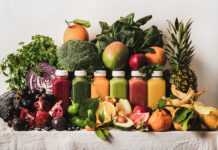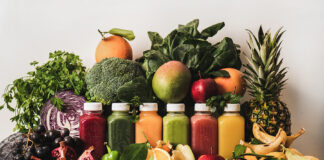
According to FoodProcessing.com, five issues loom large for the food and beverage industry as 2016 begins. Here’s a quick look at each of them:
Dietary Guidelines
Mid-January is the new expected release date for the 8th edition of the USDA and DHHS’s Dietary Guidelines for Americans (DGAs). Expectations were high for the promotion of whole foods and consideration of environmental impact. In the discussions that have ensued this past year among members of Congress and special interest groups, it looks like environmental considerations will be scrapped, but that added sugars will be capped at 10 percent of the daily diet.
GMOs
Mandatory labeling of GMO products will go into effect in Vermont July 1, barring any court challenges or overriding federal laws. In statements as recent as November, the FDA has remained adamant about the safety of GMOs. The food and beverage industry majority favors their stance, mainly because they favor a national labeling framework. Dissent arises from consumer concern and a few state legislatures.
The Senate has yet to take action on last summer’s bipartisan “Safe and Accurate Food Labeling Act” which would require genetically engineered ingredients to be reviewed on a case by case basis. USDA Secretary Tom Vilsack has said he will work in 2016 to resolve contention around this issue.
Consolidations and Buyouts
In 2016, consumer demand for “authentic, genuine food experiences” will contend with the recent trend of mega-mergers like Kraft with Heinz or AB InBev with SABMiller. According to Julian Mellentin’s 10 Key Trends in Food, Nutrition, and Health, 2016, consumers are seeking more variety and novelty in their food choices. Big mergers increase skepticism that large, established food companies will be able to deliver on that demand. Fewer companies constituting more of the business adds to concerns that farm prices will fall and supermarket prices rise.
Animal Welfare
2015 saw a tipping point among food processors for animal welfare considerations. Unilever, General Mills, and Kellogg will all begin using cage-free eggs, and McDonald’s has committed to going completely cage-free in North America within the next 10 years.
Mintel reports that 56 percent of Americans stop buying from brands they feel are unethical, and over 35 percent will stop, even when no substitute is available. Animal welfare concerns may be driving more Americans to embrace a vegetarian lifestyle. Operational innovations in animal husbandry, farm equipment, and animal housing styles may emerge as a result.
Clean Labeling
Public discussion around the definition and use of the word “natural” has been long and fierce the past several months. More than 75 percent of consumers want labels that are both “clean” and “clear,” meaning free from GMOs, high-fructose corn syrup, preservatives, and growth hormones. The NPD Group reports that younger generations are leading the charge toward fresher, more organic foods and ingredients. Trust and transparency from manufacturers and restaurants will be key factors, especially for millennial consumers, moving into the new year.
Whatever your responsibilities in the food and beverage industry, awareness of the five trends above will almost certainly impact your business trajectory in 2016.
Source: FoodProcessing.com. Food and Beverage Industry Outlook: Five Important Issues for 2016









